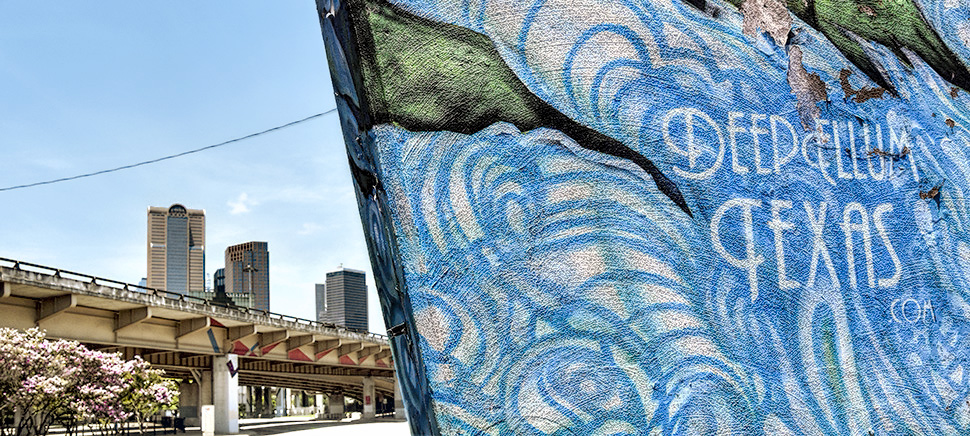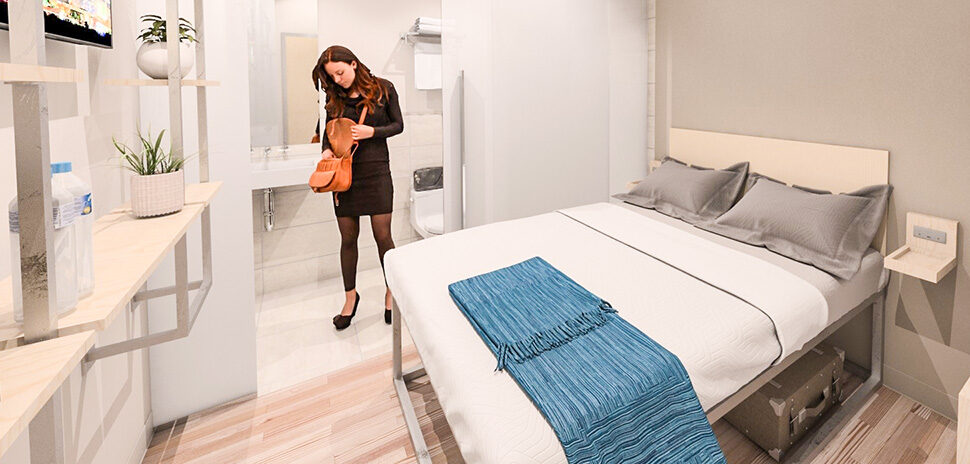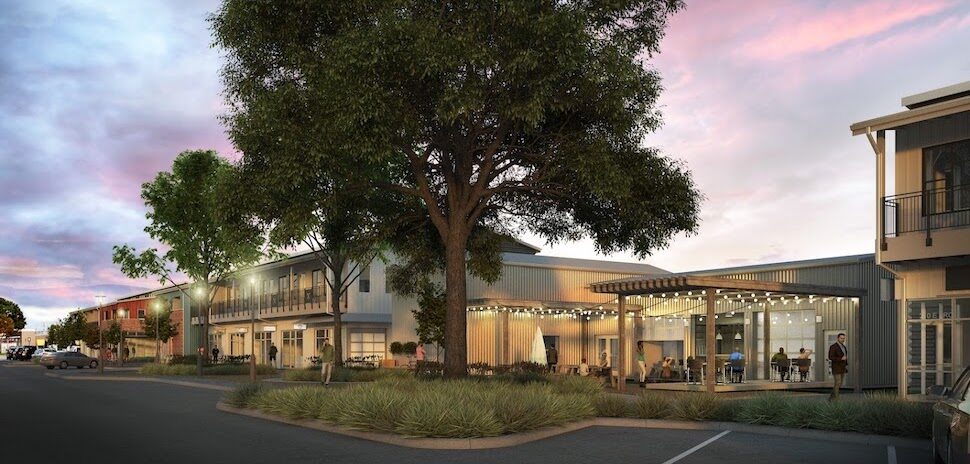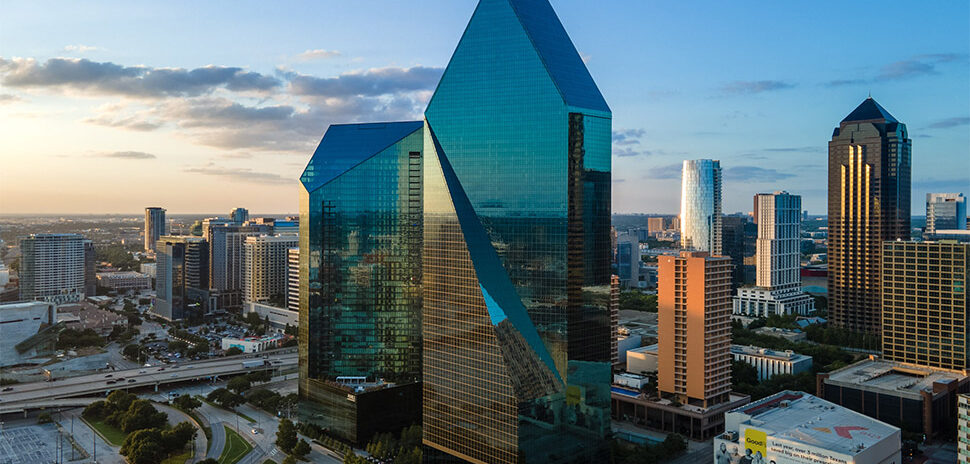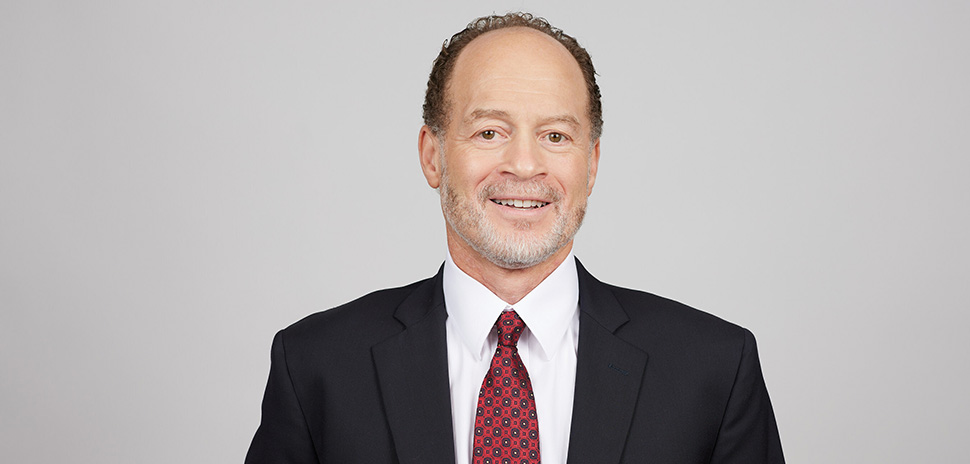CITYMAP PROPOSES MOVING STRETCH OF INTERSTATE 30, REMOVING I-345 ENTIRELY
The Texas Department of Transportation released its Dallas CityMAP study Friday, laying out a transformational vision for improving the aging highway system that encircles an increasingly crowded downtown urban core.
Among the study’s scenarios for improving the city’s urban core is the tearing down of Interstate 345, a short stretch of highway that connects Interstate 45 and U.S. Highway 75/Central Expressway between Deep Ellum and downtown’s center, as well as removing a significant section of I-45 itself. Tearing it down would create $2.5 billion worth of new property value, the report said, and lure roughly 12,000 people and 40,000 new jobs.
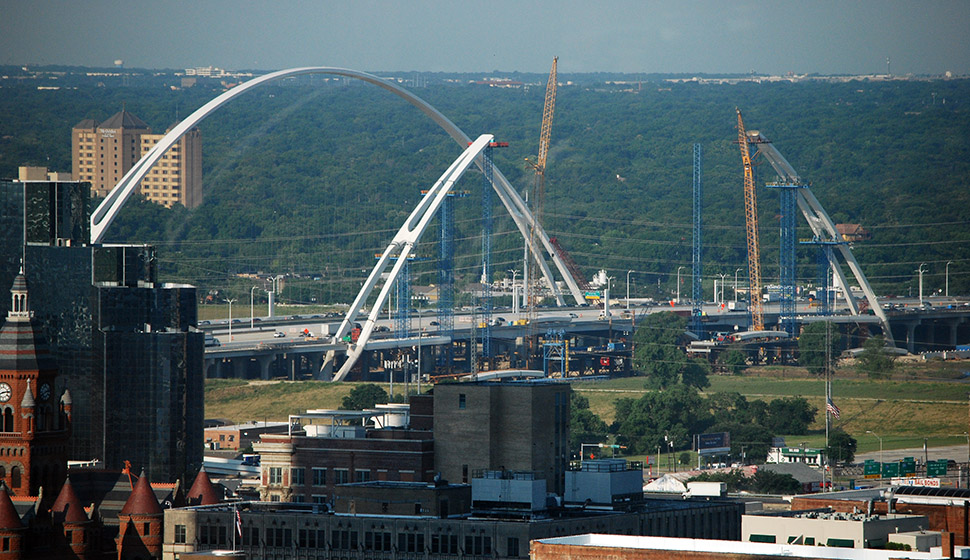
A section of Interstate 30 would be moved south to near Fair Park under the CityMAP proposal. (Photo by Lance Murray)
Another important scenario laid out in the study is a proposal to move a long stretch of Interstate 30 adjacent to downtown to a new route south of Fair Park. It also offered some locations from Oak Cliff to the Cedars and Fair Park where deck parks might be added to bring neighborhoods together.
The plan, formally called the Dallas City Center Master Assessment Process, addresses how some neighborhoods were built in such a way as to create barriers, essentially trapping those neighborhoods from adjoining areas.
CITYMAP PLAN WAS PRODUCT OF A LARGE GROUP OF PEOPLE, INTEREST GROUPS
The study also pinpointed locations between the Design District and Victory Park that could be made into wide pedestrian sidewalks.
Spearheaded by TxDOT, the CityMAP plan was the product of a group of government officials, urban planners, civic leaders, and local developers who met for many months discussing options for improving traffic flow, access to, and life in the downtown area.
They made it clear that they are not recommending any of the proposals over another.
“This is really a once in a lifetime moment for this region,” said Scott Polikov, president of Dallas-based Gateway Planning Group, the lead design consultant for the project.
“I think it’s fantastic,” he said.
Polikov said that the proposals offer, “partnership opportunities between TxDOT, the city of Dallas, Dallas County, DART, North Texas Council of Governments,” and other stakeholders in the area.
“I think it’s as big an economic development story, a real estate story as it is a mobility story,” Polikov said. “The land is very valuable, so you’re going to want to balance redevelopment in a very careful way.”
He said the I-345 proposal is an important one because it opens up Deep Ellum and the surrounding areas to be more closely connected to the downtown core.
“It is an opportunity for the city to look at how mobility can be delivered through highways, transit, and walking,” he said.
Polikov said there are “authentic historic and cultural aspects that can be reimagined in a contemporary way that will be good for people who believe that the city is a special place.”
Polikov specifically credited the work of Victor Vandergriff, of Arlington, and a member of the TxDot board, Dallas Mayor Mike Rawlings, and Dallas County Judge Clay Jenkins for working closely together in the past year to examine the consequences of the options and make the study come to fruition.
It’s all meant to handle the rapid growth in North Texas.
The report notes that, according to the North Central Texas Council of Governments’ 2040 Mobility Plan, the region will experience a 48 percent increase in population and a 46 percent increase in employment.
That growth makes an adequate transportation system paramount.
Four of the major highways around downtown — Interstates 30, 35E and 45, along with I-345 — rank among the 25 most-congested roadways in the state, the study said.
CITYMAP STUDY DOESN’T RANK OPTIONS, ONE OVER THE OTHER
Failing to address the massive traffic demands for those highways will stymie the “balance of mobility, livability, and economic development,” of the city’s urban core, the study said.
The CityMAP study doesn’t rank any of the options over one another, but it does provide data to city officials, urbanites, and regional planners so that they can assemble a plan for the city’s urban core.
Relocating Interstate 30 south of downtown would be one of the study’s most transformational options.
“The repurposing of the I-30 Canyon by the Convention Center and Farmers Market would allow Dallas to have a new downtown center taking advantage of the DART light rail and potential HSR (high-speed rail) service,” the study said.
The study said much of the I-30 relocation would be elevated on structures and would not include frontage roads.
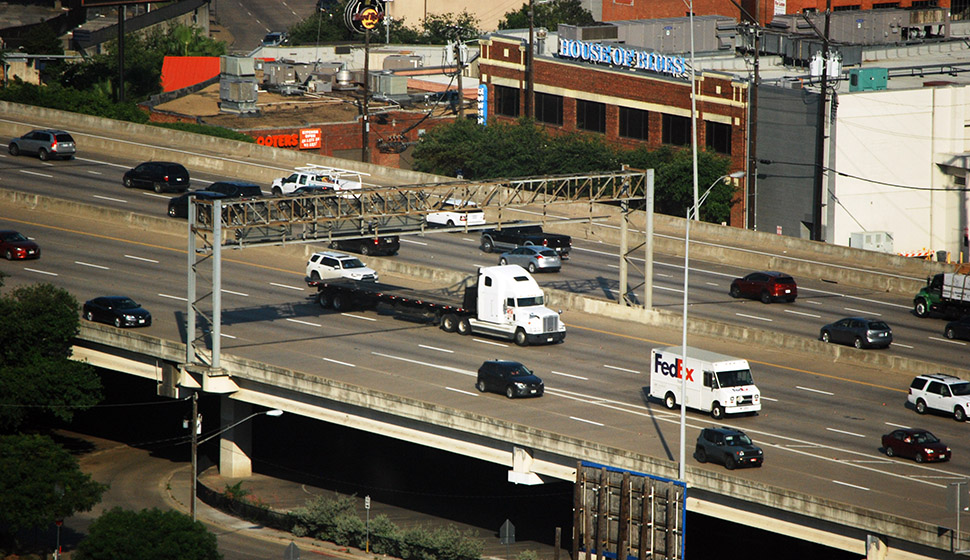
Woodall Rodgers freeway connects I-35E and U.S. 75/Central Expressway in the downtown area. (Photo by Lance Murray)
Along Interstate 35E, the fifth-most congested roadway in Texas, the plan calls for the addition of Collector-Distributor roadways that would handle traffic between intersecting roads such as Woodall Rodgers, Lamar/Continental, Hi Line, the Dallas North Tollway and the interstate’s main lanes.
The removal of the entirety of Interstate 345 has been one of the most-talked-about elements during the plan’s development.
Here’s how the plan would address I-45 traffic:
“I-45 would be completely removed north of Martin Luther King, Jr. Boulevard north to I-30. The I-45 main lanes would transition into and from Cesar Chavez Boulevard and ramps would connect to and from Good Latimer Expressway. These changes would provide surface street connections between the termination of I-45 and the CBD [Central Business District] and US 75 in order to carry the traffic displaced from I-45 and I-345.”
The removal would increase “local street connectivity” with the city’s urban core, the study said, and provide better auto, transit, bike, and pedestrian access. It also would remake historic neighborhood patterns around the city’s core and allow for better urban development patterns.
The plan would create more opportunities for affordable housing in the urban center, possibly reducing home-to-work commutes along highways in the area.
The study estimated the cost of this part of the plan would be between $100 million and $499 million.
(Photo: Quincy Preston/Dallas Innovates)
For a daily dose of what’s new and next in Dallas-Fort Worth innovation, subscribe to our Dallas Innovates e-newsletter.










